Selected Answers to Problem Set 5
1. i) |c - 0.5| < 0.25 implies that both c - 0.5 < 0.25 and -(c - 0.5) < 0.25.
Then c < 0.75 and c > 0.25. So the probability that 0.25 < c < 0.75 is 50%.
2. v) You can either solve this for r (or s) and find the integral, or convert this
into polar coordinates. The former is an integral between 0 and sqrt(2)/2 of sqrt(1/2 - x2).
Converting to polar coordinates, we find the integral is:

Or simply realize that the area of a circle is r2*Pi. In this case,
r = sqrt(2)/2, so this yields Pi/2. One-fourth of the circle (in the first quadrant)
yields Pi/8.
2. We'll take the real number line between 0 and 1 to represent arriving between 2:00 and 3:00.
We let P(T < t) = |s - r| < t, where s, r are the arrival times. The plot is as shown:
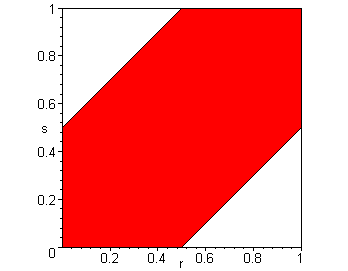

This answer comes out to 1/3, which in our terms is twenty minutes.
Now, to find the standard deviation, we take the difference of E(t) (=1/3) and t, square it, and multiply by f(t), as we normally do.
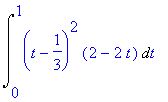
3. Rewriting the equation y = a + bx in matrix form, we get:
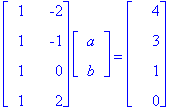
To solve for X, we need to multiply both sides by the adjoint of A. We already proved in class that the adjoint of A is the transpose of A (A* = AT). Therefore, ATAX = ATY.


We have 4a - b = 8 and -a + 9b = -11. This is a simple linear equation that equates to a = 61/35 and b = -36/35.

Click here for a maple script (pdf format) on calculating the best fit line for this problem.
4. The same method applies as in problem one. We rewrite the equation y = c + a*sin(Pi*t/6) + b*cos(Pi*t/6) as a matrix equation: AX = Y.
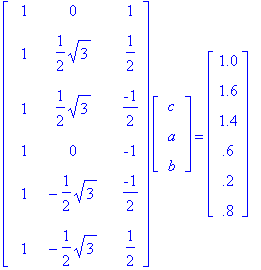
To solve for X, we need to multiply both sides by AT. Therefore, ATAX = ATY.


We have 3a = sqrt(3), 3b = 0.8, and 6c = 5.6. Therefore a = sqrt(3) / 3, b = 4/15, and c = 14/15.

Click here for a maple script (pdf format) on calculating the ocean tide.
5. First rewrite the original equation to fit a linear system.

On one side of the equation we want p multipled by something and e multiplied by something. Rewriting to fit this idea gives us this:

We can solve just as above then.
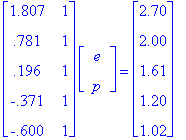


Therefore, we get p = 1.454 and e = 0.694.

Click here for a maple script (pdf format) on calculating the orbit of Tentax.
6.
a) 
|
b) 
|
c) 
|
d) 
|
7. Here are the four equations plotting x, y, log x, and log y together. Notice that the last one, plotting log x versus log y, is the most linear.
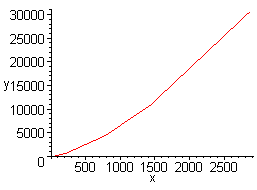
|
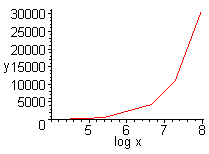
|
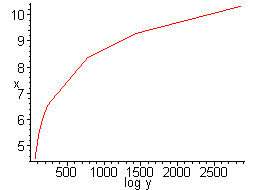
|
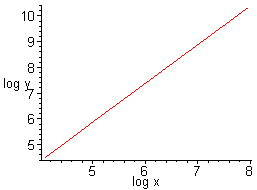
|
From the linear squares equations we get that in y = ax + b, a = 1.5063 and b = -1.6591. This equates to log(T) = 1.5063 log(r) - 1.6591. Solving for T, we get T = 0.02 r^(1.5063). Recall that these measurements are not exact; we therefore can assume that the exponent on r is 3/2, which equates to T^2 = r^3, Kepler's Law.
Click here for a maple script (pdf format) on calculating Kepler's law.
8. To find the weighted averages, we should add the number of arrivals together from both airlines:
| Alaska Airline | America West | |||
|---|---|---|---|---|
| Destination | % on time | Total Flights | % on time | Total Flights |
| Los Angeles | 88.9 | 1370 | 85.6 | 1370 |
| Phoenix | 94.8 | 5488 | 92.1 | 5488 |
| San Diego | 91.4 | 680 | 85.5 | 680 |
| San Francisco | 83.1 | 1054 | 71.3 | 1054 |
| Seattle | 85.8 | 2408 | 76.7 | 2408 |
| Total | 90.8 | 11000 | 85.5 | 11000 |